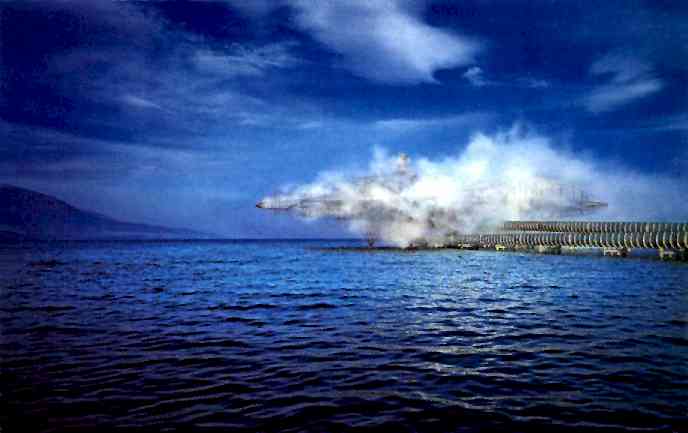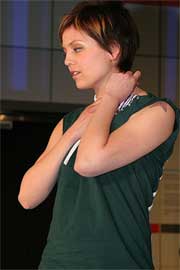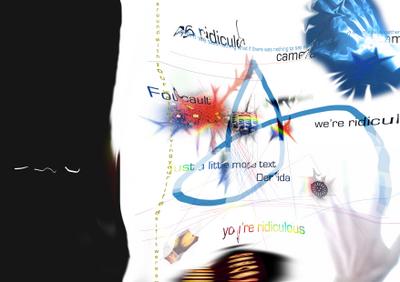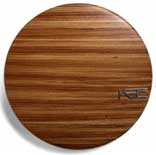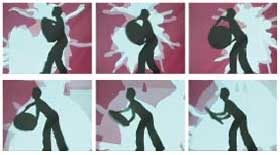
Art by people like
Richard Serra leaves me confused. Not that I'm shocked, not at all. I just find it, well, unconvincing. The huge steel plates, the massive cubes, the imposing shapes... it seems like a simplicity that's, well, out of date. I'm really having difficulty writing about this, as I'm not sure of what I think, feel, or would like to feel. Yet somehow, I find this doubt to be very important for me.
You see, it seems too heavy, too closed, too
proudly hermetic. Remember
this quote? "Nobody thinks sculpture's going to change the world", but then, Serra's wish is to "change the way you see, even minutely". There is a paradox here, a human one, but one which is no less irritating. What are these blocks of steel? Just this, blocks? In that case, shouldn't I take him seriously and consider them no more important than any other element that would "change the way I see, even minutely"? Wouldn't simple (and cheaper) binoculars do the thing? Do I really need this to change the way I see? And what does it mean, to change the way I see? Can you hear the ever-present note of classic modernism? I'll give you a hole, and you'll lift the world with your sight. Oh, brother. How
classic that sounds today. And what
are we supposed to do with yesterday's revolutionaries? Their space today seems ridiculous, or worse - funny. The
pure form.
Pure just doesn't sound right, does it? Their talk, their fafarafa, is good for the art market, which replaces the "beauty-based" language games by "truth-based" ones. And we have the Abramovićs of inner truth, the Serras of object-ive truth, and so on. They had 30, 40 years to read up on philosophy, on arts, on history. Their talk has gotten smoother, it developed into systems, or semi-systems, always open, as the post-structuralists wisely advised. The curators love it, the prices go up. They are now part of art history.
And I, the spectator, yawn. It might be my ignorance, my not taking their ride. Or, to put it in another way, I don't have enough strength for them, I can't handle all this essence. The masters of essence. With their squares and circles, plain surfaces, monochromes and voids. It's not a disliking, it's more a getting-tired, a thirst for content. And I'm not alone. The new artists are here. The little narratives, the concrete, but meaningful (signifying,
something), stories, adventures, textures that reveal forms, directions, opinions, origins, contexts, those little narratives develop, combine, they feed off each other, and yes, off the modernist power trips, their dreams of the infinite, their need for space. And, well, (the artistic)
now happens. Hesitantly, at first, making tiny, unbalanced steps, swirving and turning, crawling and going sideways, but somehow, it's more up-to-date for me than what the venerable revolutionaries are. It is more open, direct, it's more modest, but more aggressively reaching out. And I like that. I like the rusty marks the tools leave. Serra's, well, I don't know how he does it, but, paradoxically, his works don't stain.
At least not my young and innocent skin.
Read more "Questioning modernism..."







